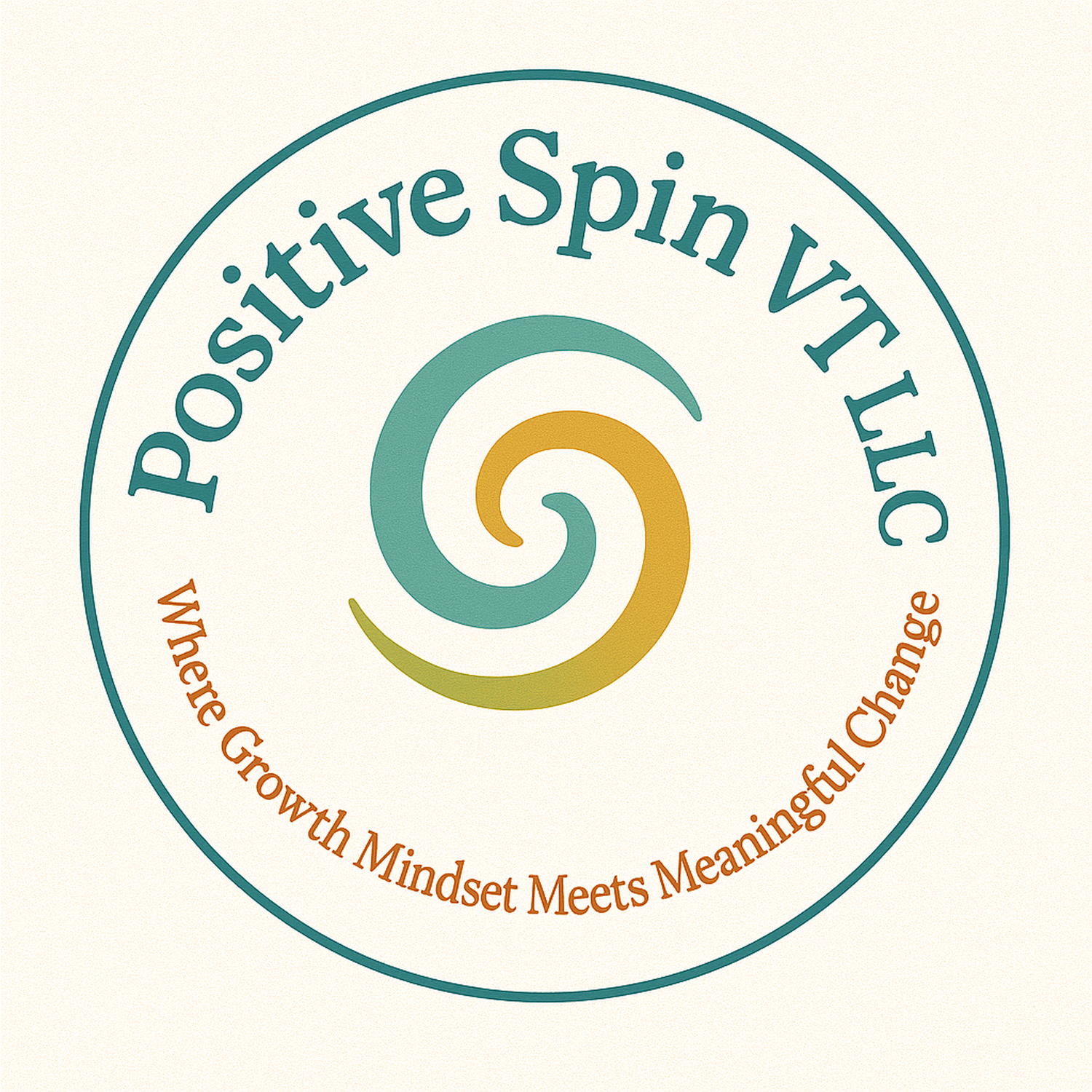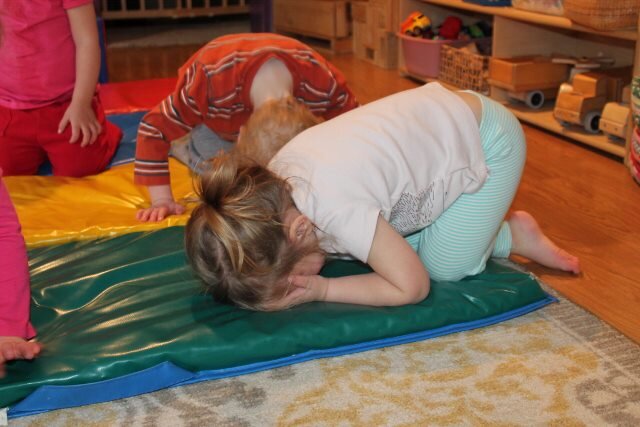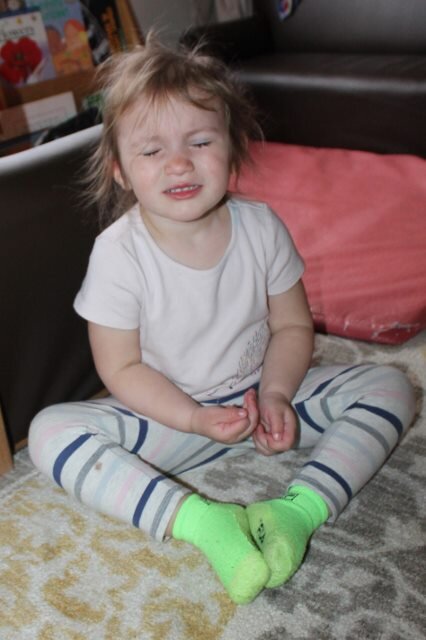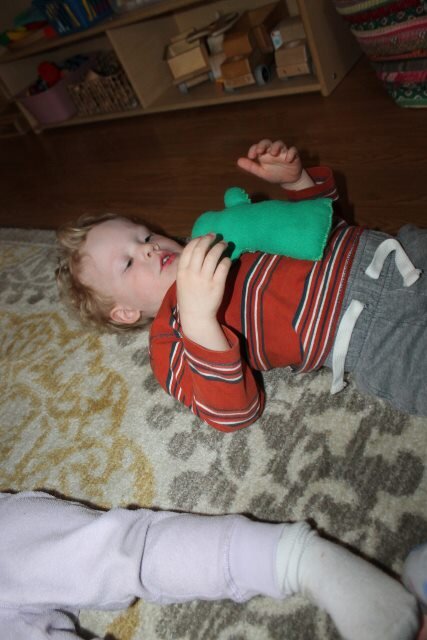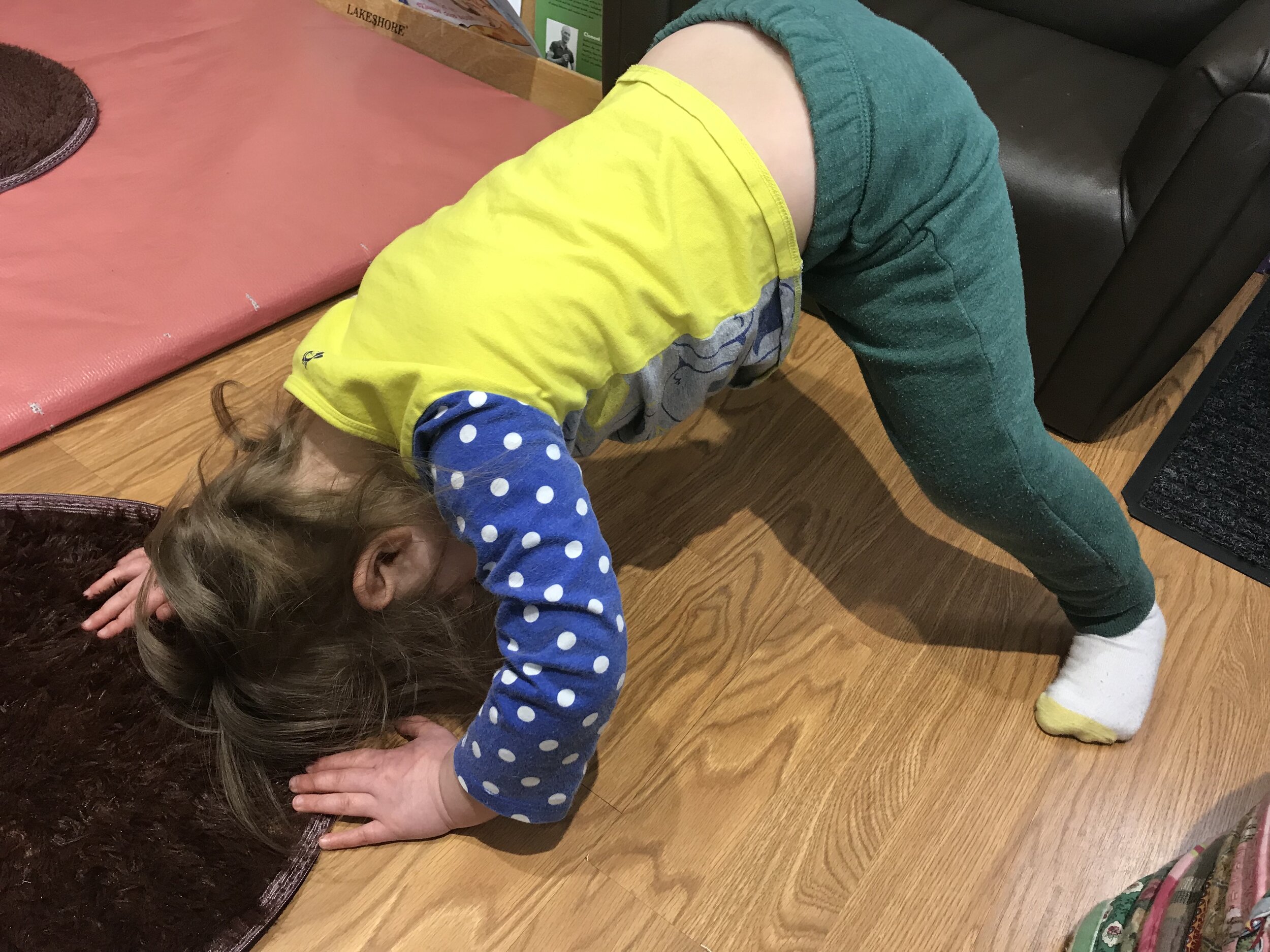Creating Yoga Practice and Meditation with Your Child
Originally published by The Other Paper, South Burlington, Vermont February 2017 article written by Ellen M. Drolette
Yoga is not just for the organic, crunchy individuals anymore; as a matter of fact, there is yoga classes especially for children and many
more for adults if all abilities all over Vermont. There is hot yoga, gentle yoga, funny named yoga that looks hard and yoga classes that will include meditation, and there are classes by the river and on the waterfront. Myself, I have dabbled with all of the above types of yoga by taking group classes, using videos and my favorite is free flow with children. I would never go as far as to call myself a yogi or any kind of a yoga expert. I do enjoy the practice however. I have discovered that practicing yoga with children is more my speed. I don’t judge myself as harshly and know they appreciate my efforts.
Create an atmosphere that is fun and stress-free. Follow their lead by keeping the session short. Ten minutes or less may be long enough. As children get more and more comfortable, they may want to do it longer.
Downward Dog, Happy Baby and Bumblebee Breaths are just a few of the yoga poses practiced with young children, children and adults of all ages across the globe. It is a practice that teaches body awareness, stress reduction and builds a healthy practice of body movement that can be practiced as a family. Many families start the practice when they have infants doing it with them on the floor nearby.
Children quickly learn through routine that breathing exercises are used at the start and end of yoga. it signals them that this is what we do to start and end each session. Even if it is just me and one other child, we use the breathing techniques as a signal. When children learn
these techniques, they can use them when they need to calm themselves, feeling like they need alone time or sometimes in times of aggression. A quiet reminder from an adult about deep breaths could be just the cure if done mindfully with intention that a child
stop and breathe. At first that comes from prompts. For example, a child falls and they are hurting and having a hard time collecting themselves. A parent may say “Take a deep breath.” This is not something that is inherently known, like just breathing in and out normally.
We call these “big belly breaths”. These can be practiced on the floor with a small stuffed animal on the belly and the child fills their tummy with air and then empties it. It gives them a great visual. I am not sure I ever knew how to fully breathe in and out until I took a class that had a focus on breaths and stretches. Children as young as 12-18 months can start learning how to use these techniques which may be funny and playful to start. Sometimes a giggle fest will ensue. My preference is to start with the flower/bubble method. Breathe in to smell the flower (pretend to pick the flower and put it up to your nose, you can get very dramatic with this), then you grab your bubble blower and blow
your bubbles while blowing out fully (again, being dramatic as you get bubbles on your bubble wand.) Another breathing technique is called the Bumblebee breath. This is one where a deep breath is taken in and as theexhale happens, a buzzzzzzzz sound is made until all of the air is out. Try is being a snake as well and use a hisssssssss.
For children that may have a hard time self-regulating, I suggest to have the child go down in to the rock pose; for adult’s that take yoga this may be called the child’s pose. Their bodies are folded with their legs underneath them and arms down by sides. The forehead is flat on the floor. This helps with making a child feel grounded and head off melt-downs if you see one coming. There are poses that can be strung together to create what is called a flow. There are strings for calm down and energizing.
My favorite books for young children are My Dad is a Pretzel By Baron Baptiste. I love that this story takes parent’s occupations and turns them into yoga poses. It is a great way to explore gender roles in professions while exploring yoga practices. For those interested in delving deeper; there is a yoga deck of cards from the same illustrator of the book by Baptiste called Yoga Pretzels. Little Yoga By Rebecca Whitford is a lovely book for an introduction to infants and toddlers to the world of yoga.
Don’t worry too much about your child’s form, just have fun. As a parent and caregiver, I find something magical in being a flower, a tree and butterfly even if for just a little while. Make sure you end with a deep breath a bow to your child and a “Namaste”
which in yoga terms means, “The light in me honors the light in you.”
